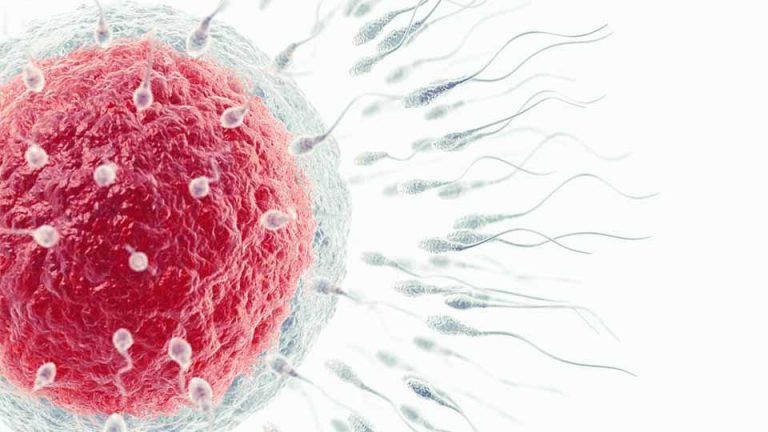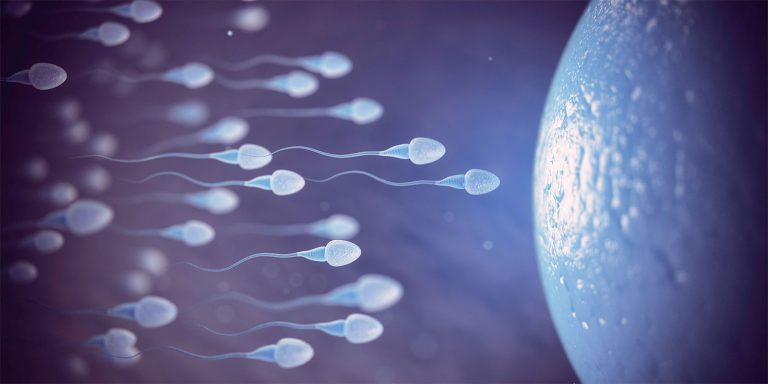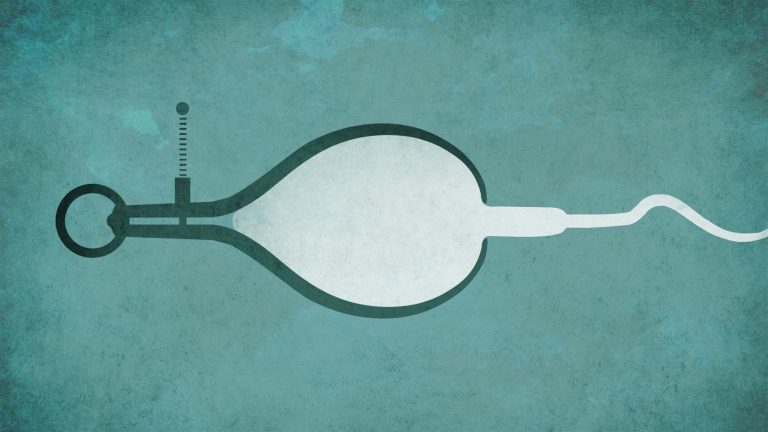When you first start to deal with fertility problems, there is a sense of urgency to learn everything you can in search of a solution. With such a complex and emotional issue like infertility there are plenty of resources out there. Your doctor will probably describe your situation to you in terms you’ve never heard before, and if you reach out to the online infertility community, you’ll find that they too have their own lingo and shorthand. It is easy to be overwhelmed by all the new terminology being thrown at you from every corner. If you’re new to the diagnosis, you might be wondering: PCOS? IVF? BBT?
We’ve put together a guide for you to all those new phrases and acronyms. Remember, these aren’t just common medical fertility terms, but terms that you might run across in the broader fertility community.
Infertility Terminology and Acronyms Glossary
#
2-Week Wait (2WW): the time between ovulation and the usual onset of menstruation, when pregnancy tests are usually taken.
A
Amenorrhea: Absent menstruation, diagnosed when a woman doesn’t have a period for 3 months.
Anovulation: A condition in which a woman doesn’t ovulate or ovulates rarely.
Anti-Müllerian hormone (AMH): A hormone produced by ovarian follicles that can be tested to indicate the ovarian reserve.
Artificial insemination: A procedure in which sperm are inserted directly into a woman’s cervix, fallopian tubes, or uterus. Learn more.
Assisted Reproduction Technology (ART): A term for infertility treatments involving both egg and sperm, such as IVF, GIFT, ZIFT, and ICSI.
Azoospermia: A condition where a man has minimal or no sperm in his semen. Learn more.
B
Basal Body Temperature (BBT): Your temperature when you first wake up; used as part of Fertility Awareness Method charting.
Blastocyst: Five to six days after a zygote is fertilized, it enters the uterus and is now called a blastocyst.
C
Cervical mucus (CM): Fluid secreted from the cervix which increases as you near ovulation and makes it easier for sperm to reach the egg.
Clomiphene citrate / Clomid: A fertility drug used to trigger follicle-stimulating hormone (FSH), which can jump-start the ovulation process.
Corpus luteum: After an egg is released during ovulation, the structure it leaves behind is called the corpus luteum. It produces progesterone, which helps sustain a new pregnancy.
Cryopreservation: The process of freezing extra eggs or embryos from a couple’s ART cycle for potential future use.
Cycle Day (CD): Can refer to natural or ART cycles; e.g. CD1 is the start of the cycle (the first day of menstruation).
D
Days Post 3-Day Transfer (DP3DT): Refers to IVF transfer of embryos and is used to provide comparison to Days Past Ovulation; e.g. 6dp3dt is equivalent to 9dpo from a cycle perspective.
Diminished ovarian reserve: A diagnosis which means the ability of the ovary to produce eggs is reduced.
E
Ectopic pregnancy: A pregnancy in which the fertilized egg implants somewhere other than the uterus.
Egg: A female reproductive cell, also called an oocyte or ovum.
Egg Retrieval (ER): Part of IVF treatment in which eggs are surgically removed from ovaries for use or storage. Learn more about IVF.
Embryo: Ten to twelve days after fertilization, the amniotic sac forms and the blastocyst is now considered an embryo for the next eight weeks.
Embryo transfer: The procedure of placing an embryo into a woman’s uterus during in vitro fertilization (IVF). Learn more about IVF.
Endometriosis (ENDO): A painful condition where the endometrium grows in other places besides the uterus. This can cause bleeding, scarring, pain, and infertility.
Endometrium: The tissue lining the inside of the uterus.
Estrogen: A female sex hormone that makes a woman’s eggs mature and causes her endometrium to start thickening to prep for pregnancy each month.
F
Fallopian Tubes: Two hollow tubes on either side of the uterus where the egg and sperm meet to begin the process of fertilization.
Fertilization: The penetration of the egg by the sperm and the combining of genetic material which results in pregnancy.
Fetus: The embryo is called a fetus from the eighth week after conception to the moment of birth.
Follicle: A structure in the ovaries that contains a developing egg.
Follicle-stimulating hormone (FSH): A reproductive hormone. In men, it stimulates sperm production. In women, it matures egg follicles. High levels of FSH (over 10 to 15mIU/mL) could mean you have few eggs left.
Frozen Embryo Transfer (FET): IVF treatment in which cryogenically frozen embryos are thawed and transferred into the uterus for gestation.
G
Gamete: A reproductive cell, either a sperm or an egg.
Gamete intrafallopian transfer (GIFT): This ART procedure extracts a woman’s eggs, mixes them with sperm and immediately uses a catheter to place them into her fallopian tube to fertilize. This is a rarely used alternative to traditional IVF.
Gestational carrier: A surrogate who carries a baby not genetically related to her; another couple’s embryo has been transferred inside her to carry.
Gestational sac: A fluid-filled structure that develops within the uterus early in pregnancy.
Gonadotropin Releasing Hormone (Gn-RH): A hormone that is involved in triggering ovulation.
H
Human chorionic gonadotropin (HCG): A hormone released when a woman is pregnant. Home pregnancy tests are designed to recognize its presence in urine.
Hysterosalpinogram (HSG): An X-ray which involves injecting dye through the cervix into the uterus to determine if the fallopian tubes are open and the uterine cavity is normal.
Hysteroscopy (HSC): A procedure in which a thin, telescope-like instrument is inserted through the cervix into the uterus, allowing the doctor to see and photograph the area.
I
Implantation: Within 6 to 12 days after an egg becomes fertilized, it attaches (or implants) to the lining of the uterus.
In vitro fertilization (IVF): An ART procedure in which a woman’s eggs are removed from her ovaries and fertilized outside her body in a lab. The resulting embryos are then transferred back into the woman’s uterus. Learn more about IVF.
Infertility: Medically, if a woman is under 34, she and her partner are experiencing infertility if they haven’t conceived after having 12 months of unprotected sex. If she’s over 35, they are experiencing infertility after six months of trying. Learn more.
Intracytoplasmic sperm injection (ICSI): In this IVF procedure, which takes place in a lab, a single sperm is injected directly into an egg. The fertilized egg is then implanted into a woman’s uterus. Learn about ICSI.
Intrauterine insemination (IUI): A procedure involving placing sperm directly into a woman’s uterus to facilitate fertilization. Learn more about IUI.
L
Laparoscopy: A procedure that involves insertion of a narrow, telescope-like instrument called a laparoscope through a small incision in the abdomen, allowing doctors to inspect various reproductive organs.
LH surge: A surge of Luteinizing Hormone helps a woman’s egg to break through the follicle at ovulation. You can use an ovulation predictor kit to detect this surge in your urine and know that ovulation is likely within the next 12 to 24 hours.
Luteal Phase: The second half of the menstrual cycle.
Luteal Phase Defect (LPD): disorder characterized by low progesterone in the luteal phase, inadequate lining, and/or shorter periods.
Luteinizing hormone (LH): A reproductive hormone that, in women, is responsible for the monthly release of an egg. In men, LH is responsible for initiating the production of testosterone.
M
Male Factor Infertility: When the cause of a couple’s infertility is due to problems in the man or when it contributes to existing fertility problems in the woman. Learn more.
Miscarriage (also called spontaneous abortion): A pregnancy ending in the spontaneous loss of the embryo or fetus before 20 weeks of gestation.
Morphology: The size and shape of sperm. Learn about sperm morphology.
Motility: Sperm’s ability to move. Learn about sperm motility.
O
Oligozoospermia (Also oligospermia): A condition where a man has very few sperm, causing male factor infertility. Learn about oligospermia.
Oocyte: Another term for the female reproductive cell, also called an egg.
Ovarian Hyperstimulation Sydrome (OHSS): potentially serious complication of some types of ART, as a result of the medication used. Learn about OHSS.
Ovarian reserve: The capacity of a woman’s ovaries to produce healthy eggs.
Ovarian stimulation: The use of medications to stimulate the ovaries to develop eggs.
Ovulation: When an ovary releases a mature egg; a monthly occurrence that happens midway through the menstrual cycle in most women.
Ovulation Predictor Kit or Test: used to refer to the home test strips used to determine date of predicted ovulation.
Ovum: Another term for the female reproductive cell, also called an egg.
P
Pelvic Inflammatory Disease (PID): Inflammation of the uterus, fallopian tubes, and ovaries due to infection.
Polycystic Ovary Syndrome (PCOS): A common hormonal condition which causes menstrual abnormalities, skin/hair changes, infertility and other health problems. The name comes from the multiple small cysts which line the ovaries of most women with the disorder. Learn more about PCOS.
Postcoital Test: A fertility test in which a sample of cervical mucus is taken after intercourse to check the number and behavior of the sperm.
Preimplantation genetic diagnosis (PGD): A procedure following the IVF process that extracts one or two cells from the embryos to screen for diseases and disorders. Learn more about PGD.
Premature Ovarian Failure: A condition in which a woman enters menopause before age 40 as a result of the ovaries ceasing to produce eggs.
Progesterone: A hormone that readies the uterine lining to accept implantation of a blastocyst.
R
Recurrent Pregnancy Loss (RPL): umbrella term for loss of three or more consecutive intrauterine pregnancies for any known or unknown reasons.
Reproductive endocrinologist (RE): An OBGYN who has taken additional years of training to specialize in reproductive endocrine disorders and infertility.
Retrograde Ejaculation: A condition in which semen enters the bladder during ejaculation instead of leaving the penis.
Round Spermatid Nucleus Injection (RSNI): An experimental fertilization technique in which immature sperm cells are removed from the testicle and the genetic material is injected into an egg.
S
Semen analysis (SA): An examination that assesses a man’s sperm count, morphology, and motility. Learn more about semen analysis.
Sonohysterogram: ultrasound test used to evaluate uterus.
Sperm: The male reproductive cell, produced in the testes and found in semen.
T
Testicular sperm extraction (TESE): This minor surgical procedure involves the removal of a small sample of testicular tissue in order to retrieve sperm for use in an IVF cycle.
Testosterone: A male sex hormone produced in the testicles which aids in the production of sperm.
Thyroid Stimulating Hormone (TSH): An important hormone in the human reproductive cycle and therefore of particular interest during ART treatments.
Tubal factor infertility: Tubal factor infertility is either a complete or partial blockage and/or scarring of the fallopian tubes, causing infertility (since sperm are unable to meet the egg, or the egg is unable to move to the uterus).
U
Unexplained infertility: A diagnostic category used when infertility is present, but no cause of it is found in either the woman or the man. Learn about unexplained infertility.
Uterus: The womb, the main female reproductive organ.
V
Varicocele: A swollen vein in the scrotum that may affect the quality and the production of sperm. Learn more about varicoceles.
Z
Zygote: The fertilized egg in the fallopian tube.
Zygote intrafallopian transfer (ZIFT): A rarely used ART procedure in which eggs are collected from a woman’s ovary and fertilized outside her body. A laparoscope is then used to place the resulting zygote (fertilized egg) into the woman’s fallopian tube through a small incision in her abdomen.







